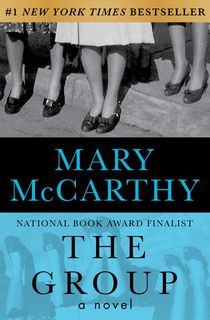Jump back 50 years and get a sense of America's most radical decade for yourself with these books from the 1960s. The summer of '69 came to a close half a century ago, but the culmination of the 1960s—a decade of sexual revolution and dramatic political change, cultural celebrities, social scandals, and literary epiphanies—still feels more relevant than ever. Just look at films like Once Upon a Time in Hollywood and Zeroville (note—in this case, the book is much better than the movie), and it's clear that America never really got over its most unforgettable era.
We're celebrating the spirit of the 1960s with 11 iconic books that pushed the boundaries of society, media, and politics in ways none had ever done before. It was an excellent time for new releases—how many of these 1960s books have you read?

To Kill a Mockingbird
Though it was published in 1960, this Pulitzer Prize-winning coming of age story takes place in the 1930s. In case you’re unfamiliar with the plot (or the 1962 movie starring Gregory Peck), it follows Scout and her brother Jem, and their fascination with Boo Radley, a recluse who lives down the street. At the same time, their father Atticus Finch is a lawyer defending Tom Robinson, a black man who has been accused of rape. The book is beloved for its depictions of the American South, race relations, differences in class, and the power of courage.
Related: The 6 Best Dads in Literature

Catch-22
Since it hit bookstores in 1961, Joseph Heller’s satirical novel about World War II immediately drew everyone’s interest, and it’s done a pretty good job of keeping it in the decades since. The New York Times seemed to get it right when it called the novel “A dazzling performance that will outrage nearly as many readers as it delights”—The New Yorker, for example, complained that it “doesn't even seem to be written; instead, it gives the impression of having been shouted onto paper.” But whether you love it or hate it, there’s no denying that Catch-22 is an iconic 1960s novel. After all, only so many books’ titles permanently make their way into our lexicon.

The Group
Published in 1963, The Group made waves with its vivid depictions of 1930s women discussing (and taking part in) sex, contraception and breast feeding—”Did you read Chapter Two yet?” was a common question among women who were sharing the book with one another. Of course, it wasn’t all shock value. The book holds up to the test of time thanks to its wit, sharp writing and well-developed characters, most of whom make up the eponymous “group,” eight women who graduated from Vassar in 1933. The book is especially insightful for pointing out that most of the things being splashed all over the media in the 1960s weren't new; they just weren't being hidden anymore.

Portnoy's Complaint
Considered by many to be Roth’s masterpiece, the book caused a stir when it was first published for its graphic depictions of male promiscuity, masturbation, and flippant portrayal of Jewish identity. The 1969 bestseller turned Roth into a celebrity in his own right, and on top of the jaw-dropping descriptions, is remembered for its ingenious structure: the entire book is presented as one man's monologue to his psychoanalyst.

In Cold Blood
Truman Capote’s 1966 true crime novel shocked readers across the country with its ability to combine skillful prose with the horrific events surrounding a quadruple murder. Based on the 1959 deaths of the Herbert Clutter family in Kansas, Capote (and friend and fellow author Harper Lee) interviewed the investigators and townspeople to create thousands of pages of notes.
Capote then distilled those notes into 343 pages, creating a book that is still the second-best selling true crime novel in history (the first, if you’re wondering, is Helter Skelter).

Sex and the Single Girl
As the iconic editor of Cosmopolitan magazine for 32 years, Brown ushered in a whole new way of thinking about work, men, and sex with her first book that jumpstarted a cultural phenomenon. Brown's novel challenged the idea that every woman must be married, and encourages women to first focus on their own goals instead of just finding a husband.

The Autobiography of Malcolm X
Muslim minister, human-rights activist, and anti-integrationist, Malcolm X told his life story and philosophy in this 1965 bestseller. Written in collaboration with journalist Alex Haley, it offered an essential perspective on the limits of the American dream – and outlined the African-American struggle for equality in the United States.

The Electric Kool-Aid Acid Test
LSD pervaded the 1960s party culture, as attested to in The Electric Kool-Aid Acid Test. The book – considered one of the most iconic histories of the hippie movement – follows novelist Ken Kesey and his band of Merry Pranksters as they administer “acid tests,” a.k.a. communal tripping parties.

Superstar
During the ‘60s, Andy Warhol’s enigmatic Factory was the place to be – and Superstar was a fictionalized account of life behind the Factory doors, written by one of the most famous of Warhol’s protégés. Though the names were all changed, the real stars of Warhol’s factory were still scandalously recognizable.

Rosemary's Baby
Levin’s tale of a woman who unknowingly gives birth to the antichrist was not only the bestselling horror novel of the decade – it was also adapted by Roman Polanski into one of the most terrifying and enduring classics of American horror cinema. It then went on to inspire other books and films, such as The Exorcist and The Omen.
Related: The 10 Best Horror Books—We Dare You to Finish Them!

The Go-Go Years
During the 1960s, the United States experienced the longest period of uninterrupted economic expansion in history. In The Go-Go Years, Brooks blends humor and astute analysis to illustrate the rapid growth and even faster decline of the 1960s stock market – and the huge losses of its big-betting players.
Photo: Wikimedia Commons







